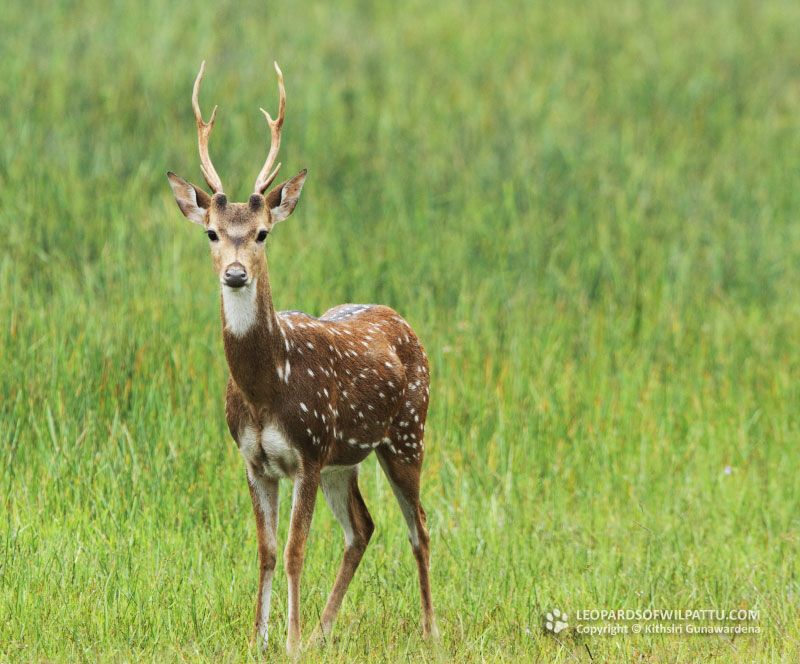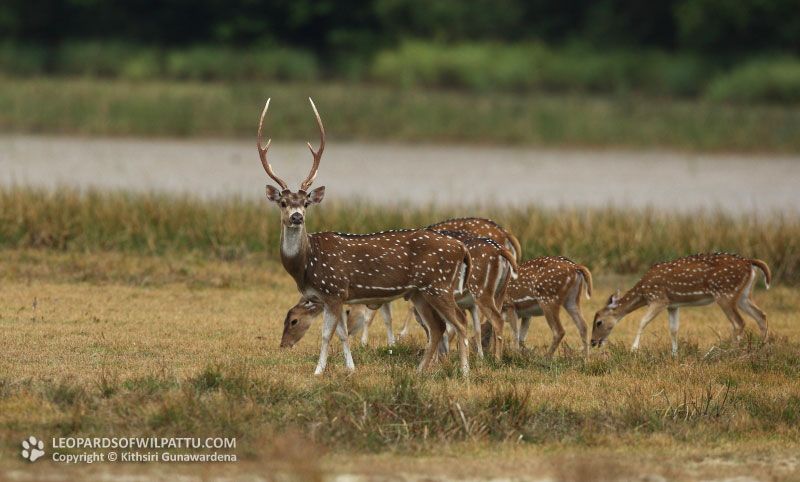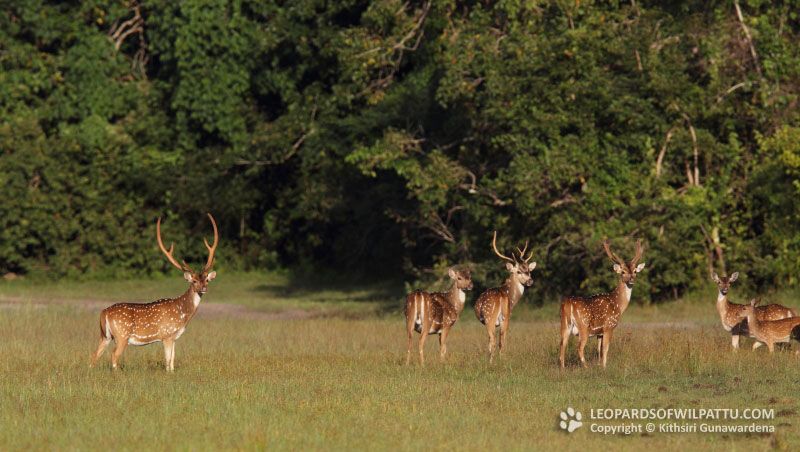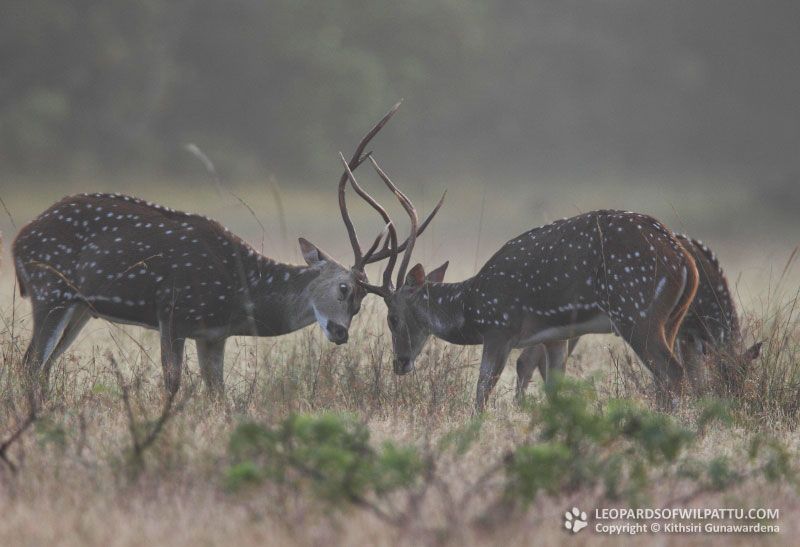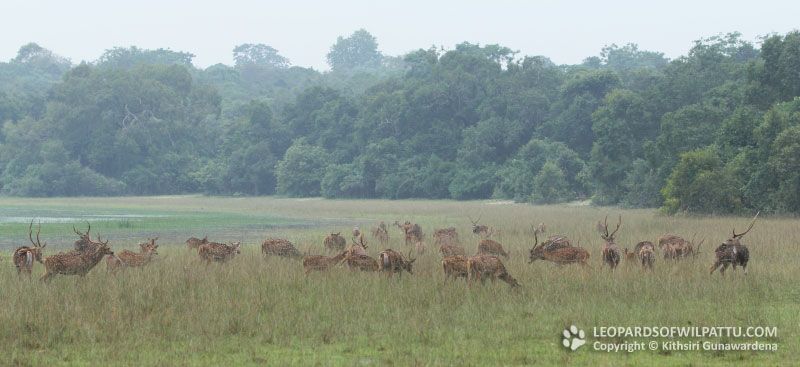
Mammals ‹‹ Go Back
This species is found in India, Bangladesh, Nepal, Bhutan and Sri Lanka. It has also been introduced in Europe, United States, Australia, Brazil, Uruguay and Argentina. The conservation status of this species is regarded as Least Concerned (National Red List 2012).
This is a species protected under the Fauna and Flora Protection Ordinance as amended by Act No. 22 of 2009.
This is primarily a denizen of the dry lowland forests and is not found in the hills or the wet zone forests. I have seen it in all the dry zone national parks as well as forested areas outside national parks. The highest altitude at which I have seen this species is at 240 meters in Victoria, Randenigala, and Rantambe National Park. W.W.A Phillips in his Manual of the Mammals of Ceylon, 1935 writes that it ascends hills up to 450 meters. In most of its range they are generally seen in herds of about 20-40. However in Wasgomuwa and Kumana National Parks I have occasionally observed herds in excess of 100. In December 2010 I counted 703 of this species in one day during a day’s game drive at Kumana and 507 at Wasgomuwa in December 1998. The highest deer counts I have had in a day at other national parks so far have been: 205 at Udawalawa, 123 at Bundala and 388 at Yala Block 1. The average weight of a male is around 74 Kilograms where as the typical weight of a female is around 46 Kilograms.
While the typical herd consists of mostly females and fawns of all age groups with a few stags, bachelor parties’ of only stags can also seen occasionally at Wilpattu.
On the 24th of December 2012 I counted 472, my highest count to date at Wilpattu, with a herd of 106 at Kali Villu and 66 at Tala Wila. Upon analyzing the number of Spotted Deer counted in a day during my field trips to the park, the highest numbers are recorded from October to December and the lowest between June – September. Interestingly the fruiting season of Palu, Madan, Kiri Koon and Weera in Wilpattu also happens to be during the months where the least number of Deer are observed. Also with the arrival of rains around September, the parched open fields around most Villus spring to life with a fresh growth of grass and other small plants, which continues during the following three months where large herds of deer can be observed. Thus the apparent cause for the numbers of deer sightings to fluctuate as mentioned above, in my view, is perhaps due to them taking to the forest and subsisting primarily on a rich fruit diet during the fruiting season and arriving in the open plains to relish the fresh shoots after the rains.
My observations of this species in the park indicate that the breeding season where you can hear the intermittant rutting calls of the males is during the dry season from June to August. Most number of fawns can be observed just after the the beginning of the rains from October to about December. By February most males would shed their antlers and by May they will carry antlers covered in velvet. They will have clean pairs of antlers ready for battle to greet the on coming breeding season all over again by June.
Even though the ground colour of the coat of this species is more or less of a uniform light brown, I have often observed some stags in peak breeding condition to have a darker brown coat with the neck being of an even darker brown in sharp contrast to the white spots and the white on the throat. This rich deep brown neck is only observed in stags with well-developed clean antlers.
I have often seen these deer moving through the jungle following troops of Grey Langurs. This is a symbiotic relationship that benefits both species. While the troop feeds, the monkeys will always have one member that will act as a look out’ that will constantly watch out for predators from the top and will give out immediate alarm calls at the first sign of a predator. The ever-vigilant deer will make its alarm calls if any danger is detected from the ground. Thus the association results in both species achieving a greater level of security as both these species are hunted by leopards and pythons. The deer, while enjoying greater protection, have a further benefit of being able to relish the tender shoots and fruits constantly dropped by the monkeys as they feed.

